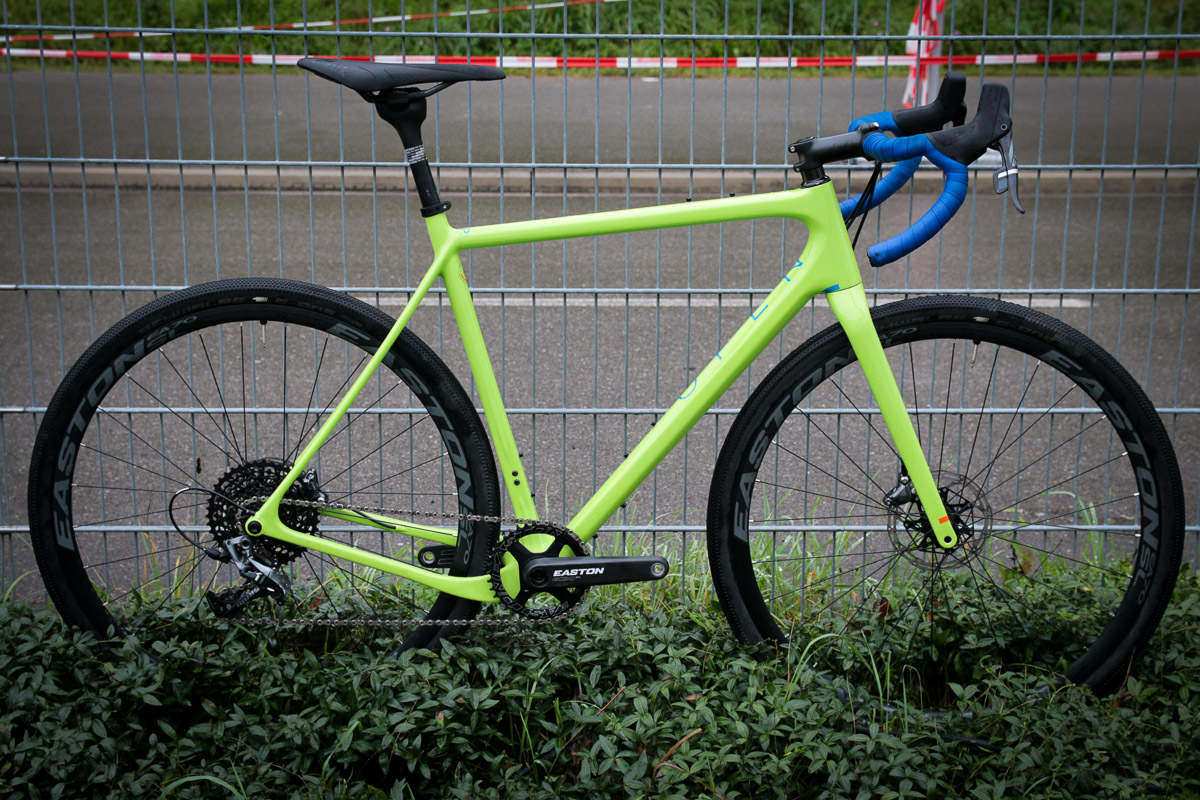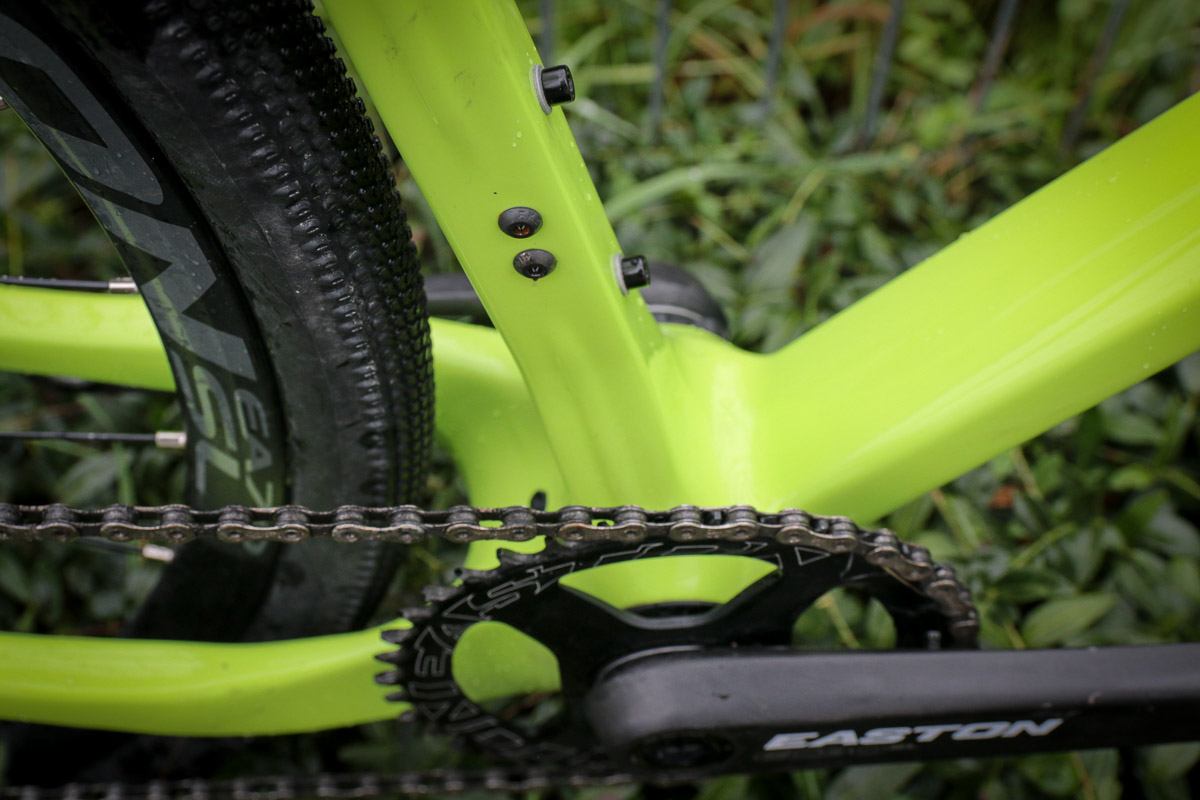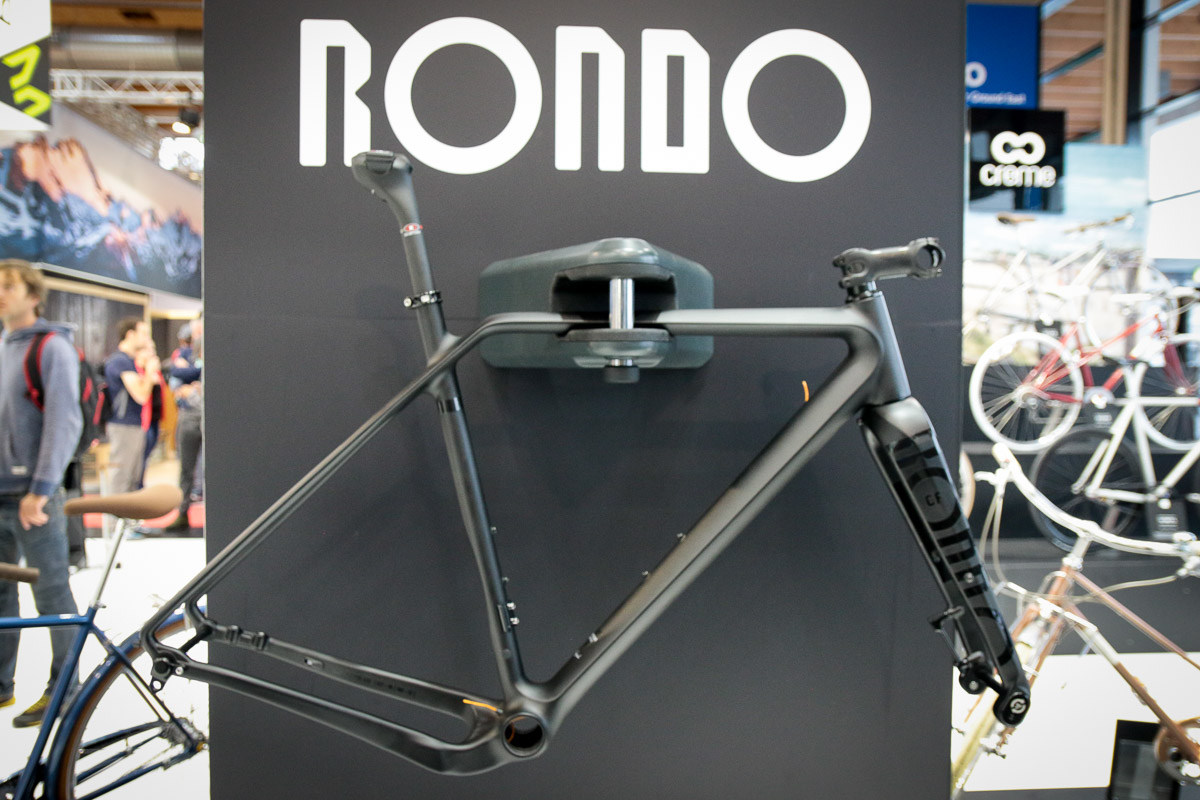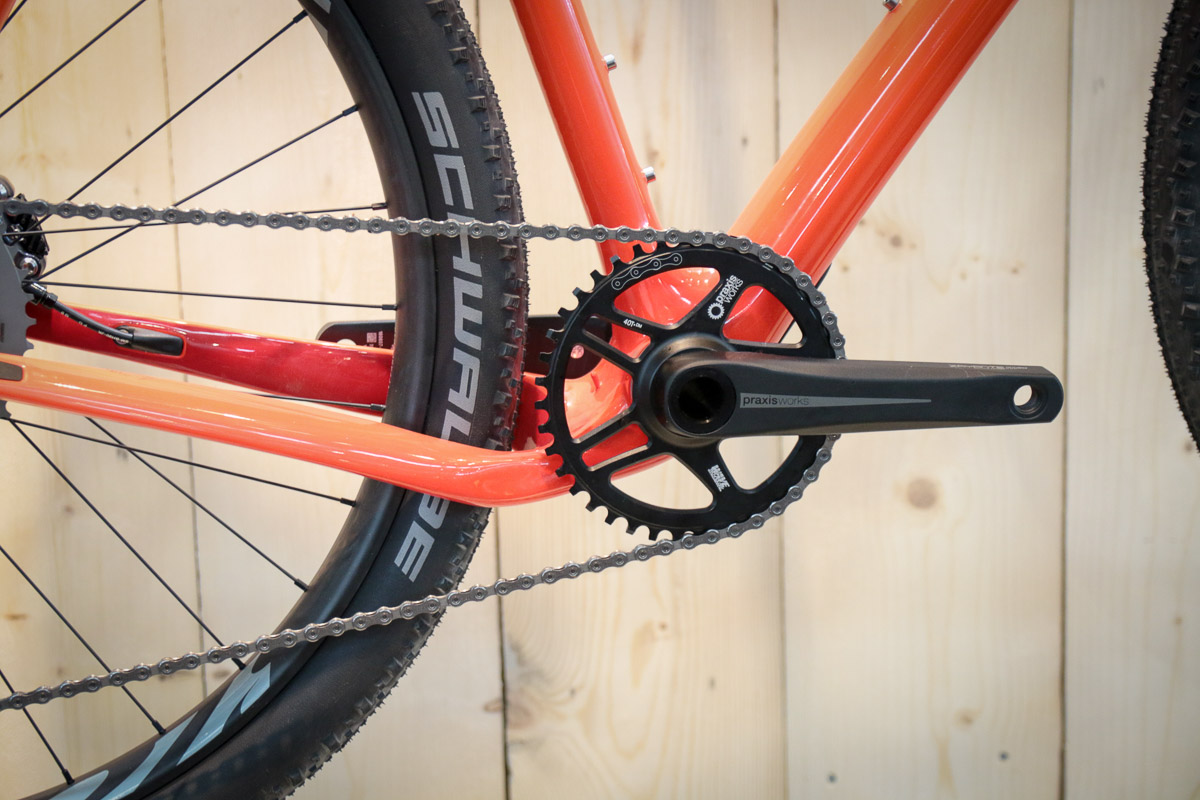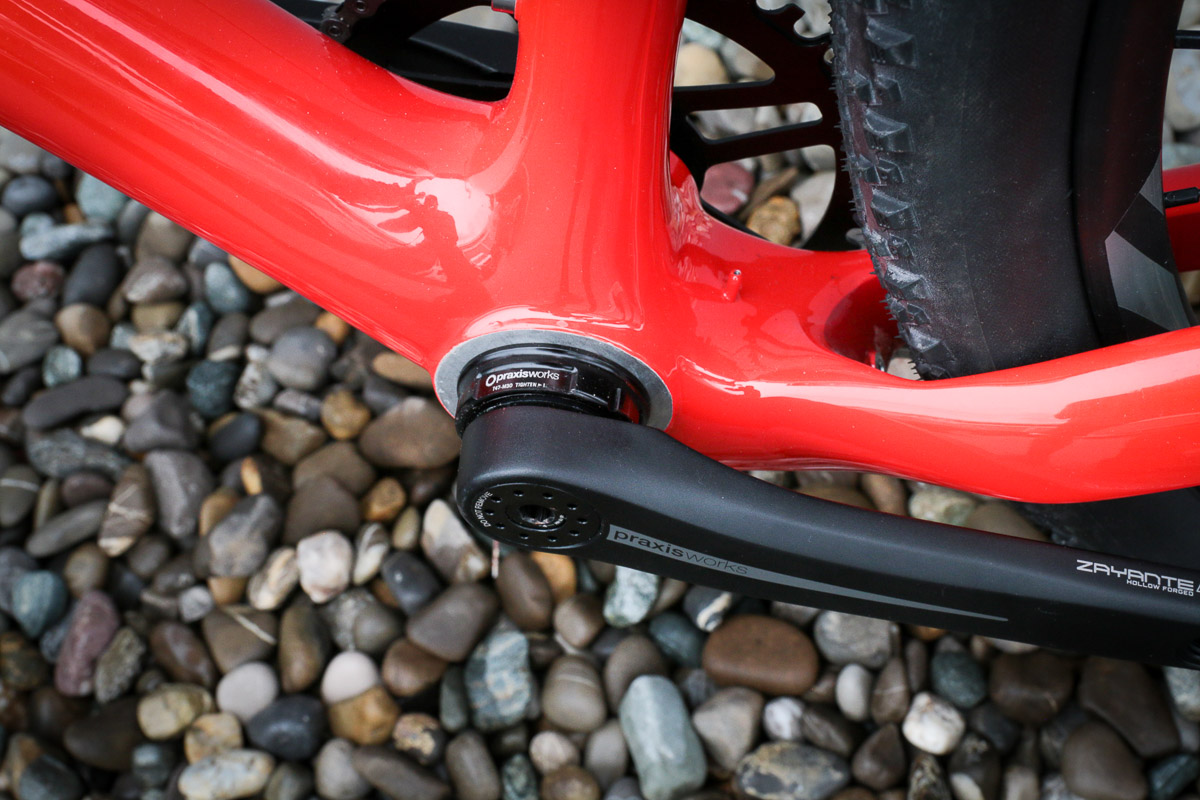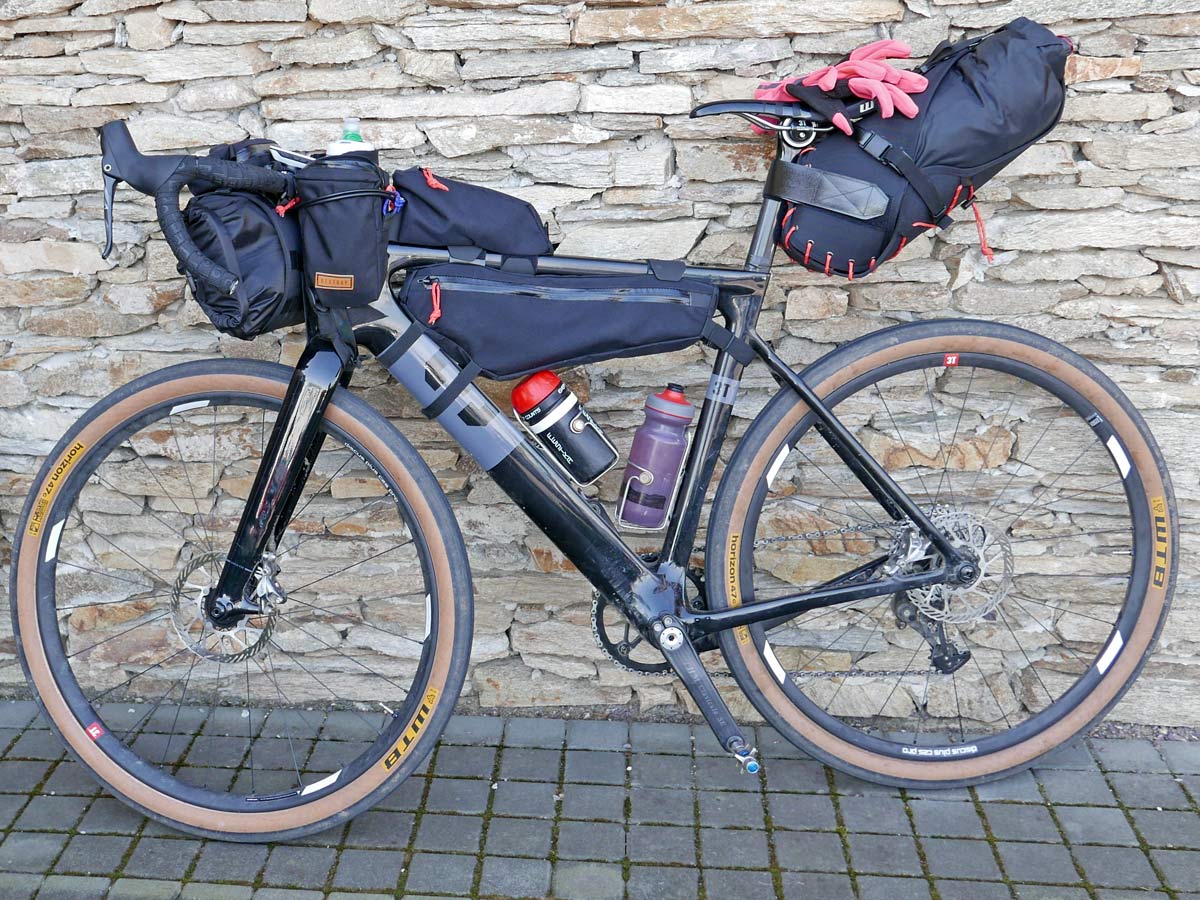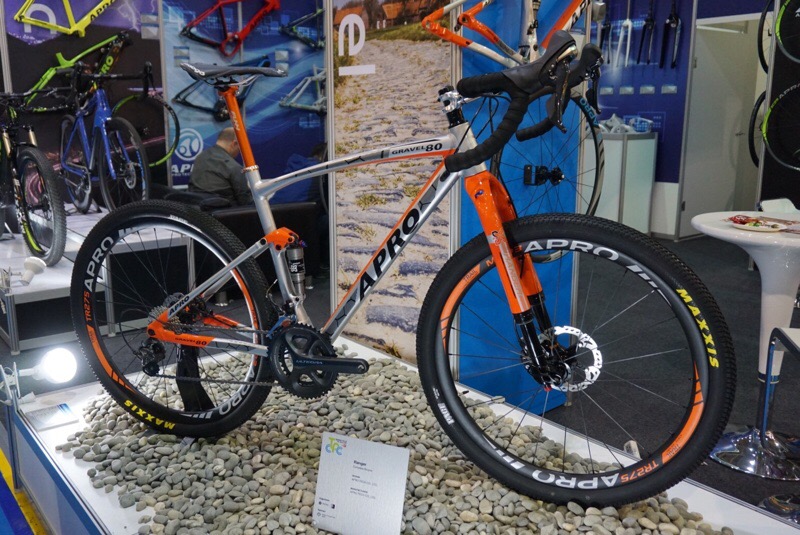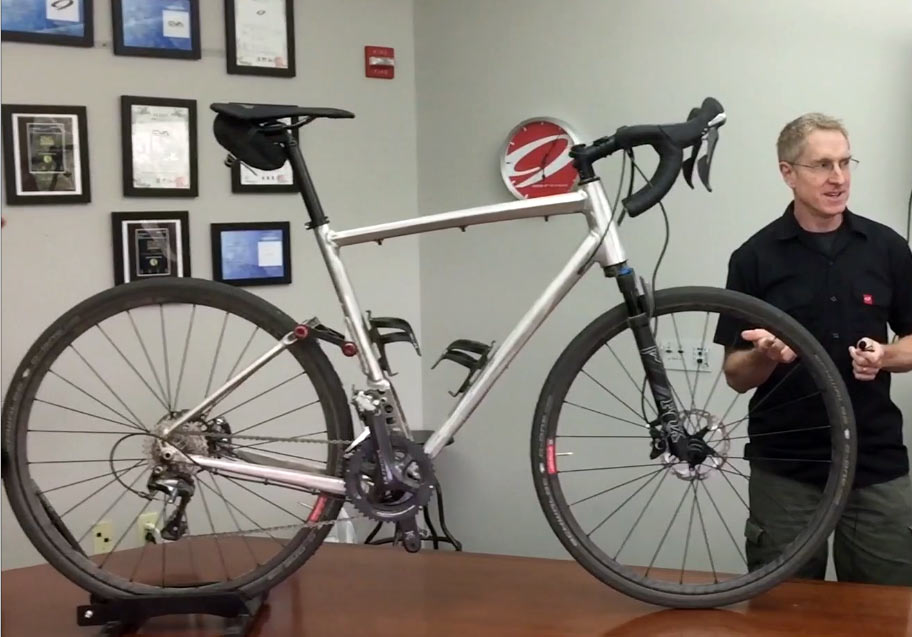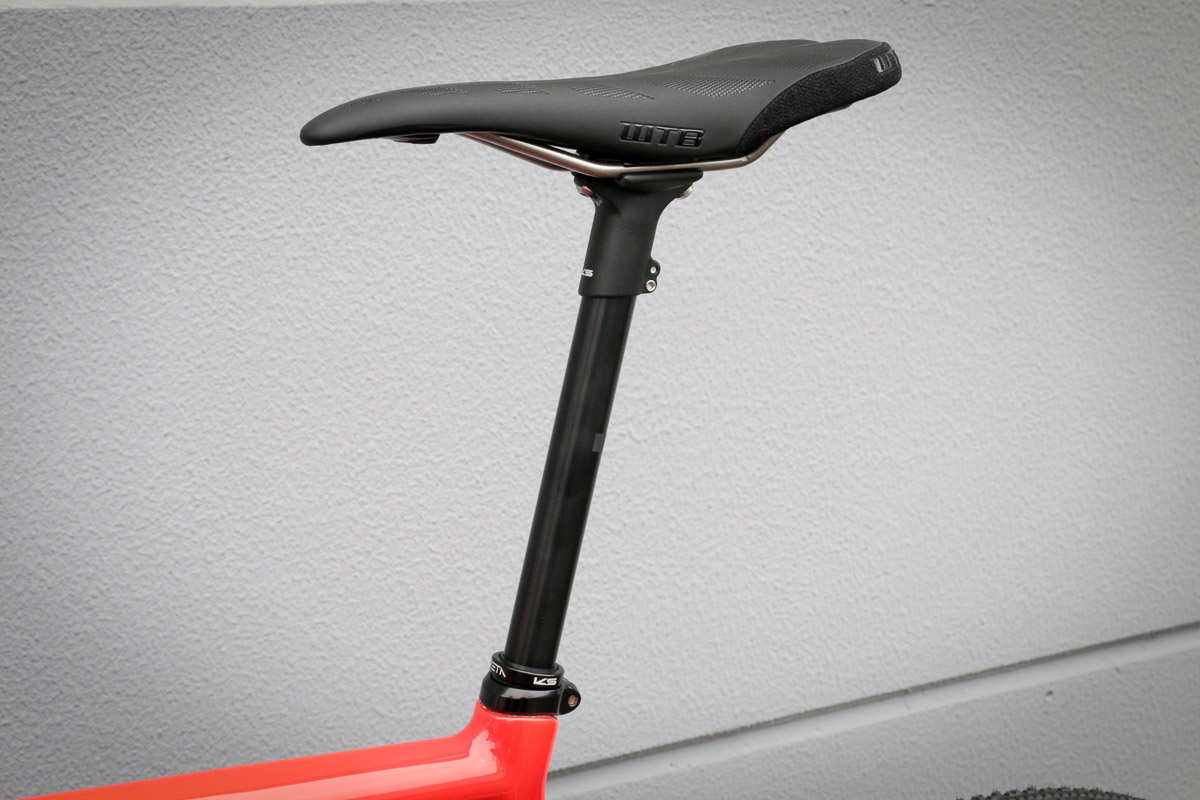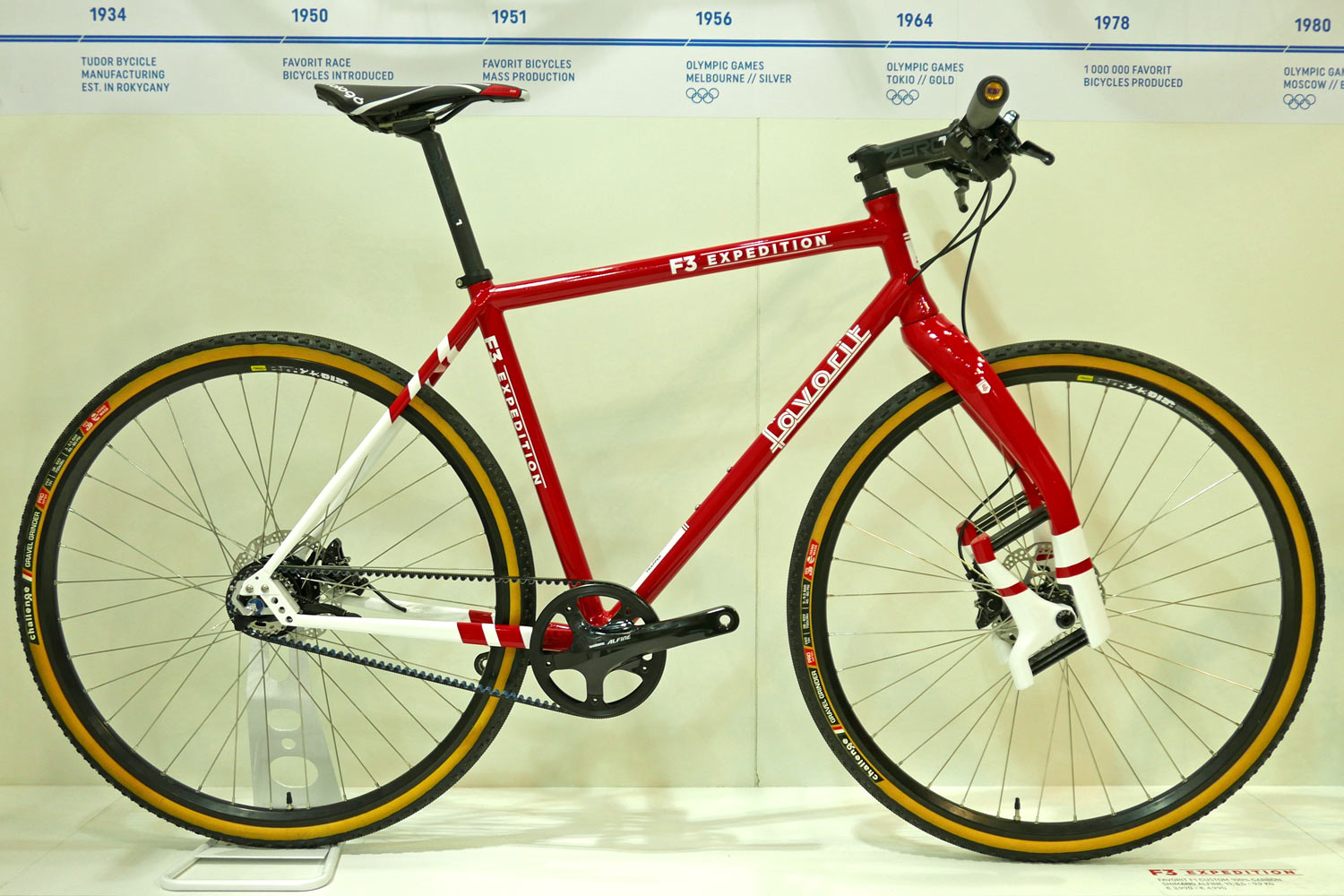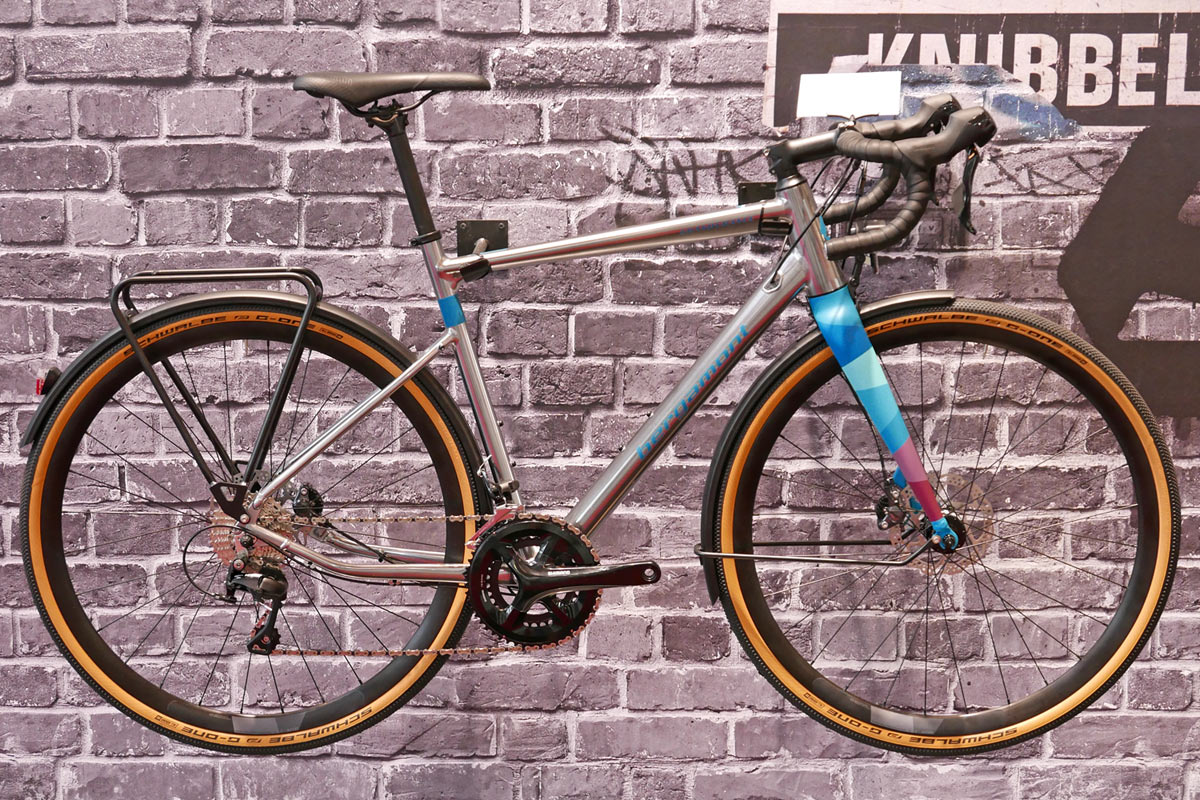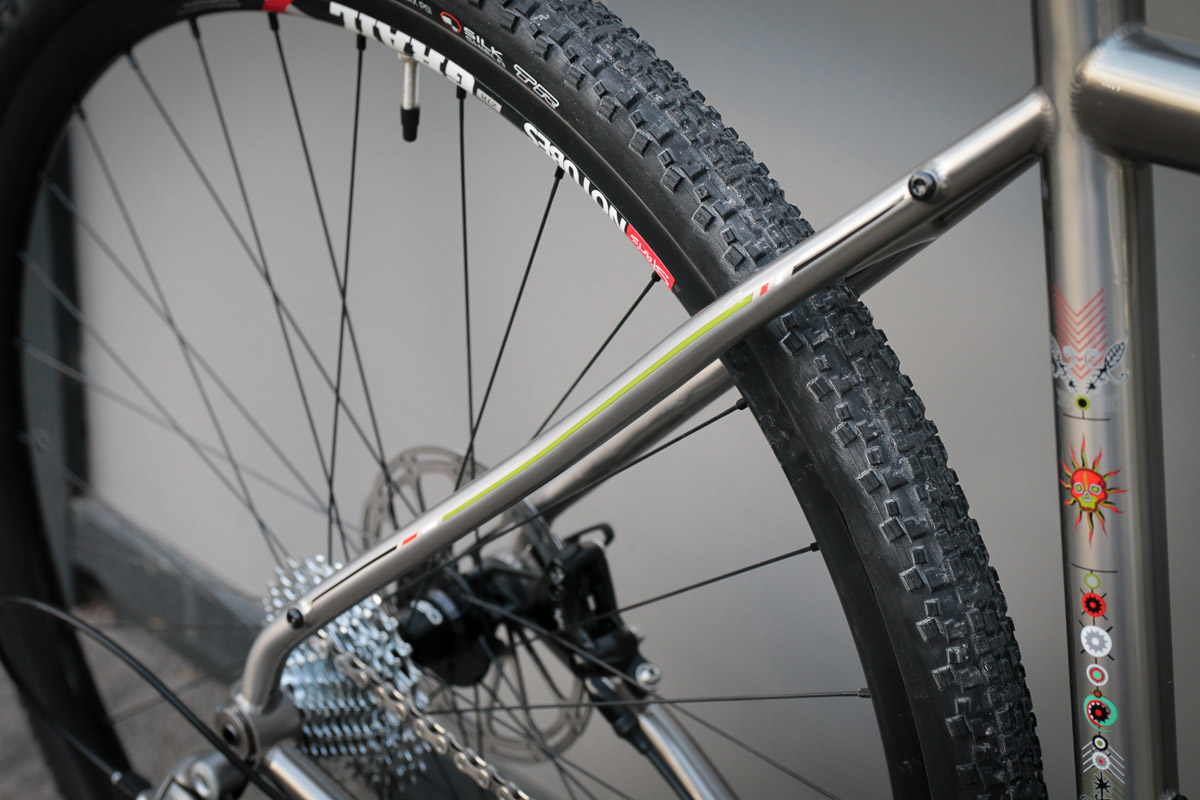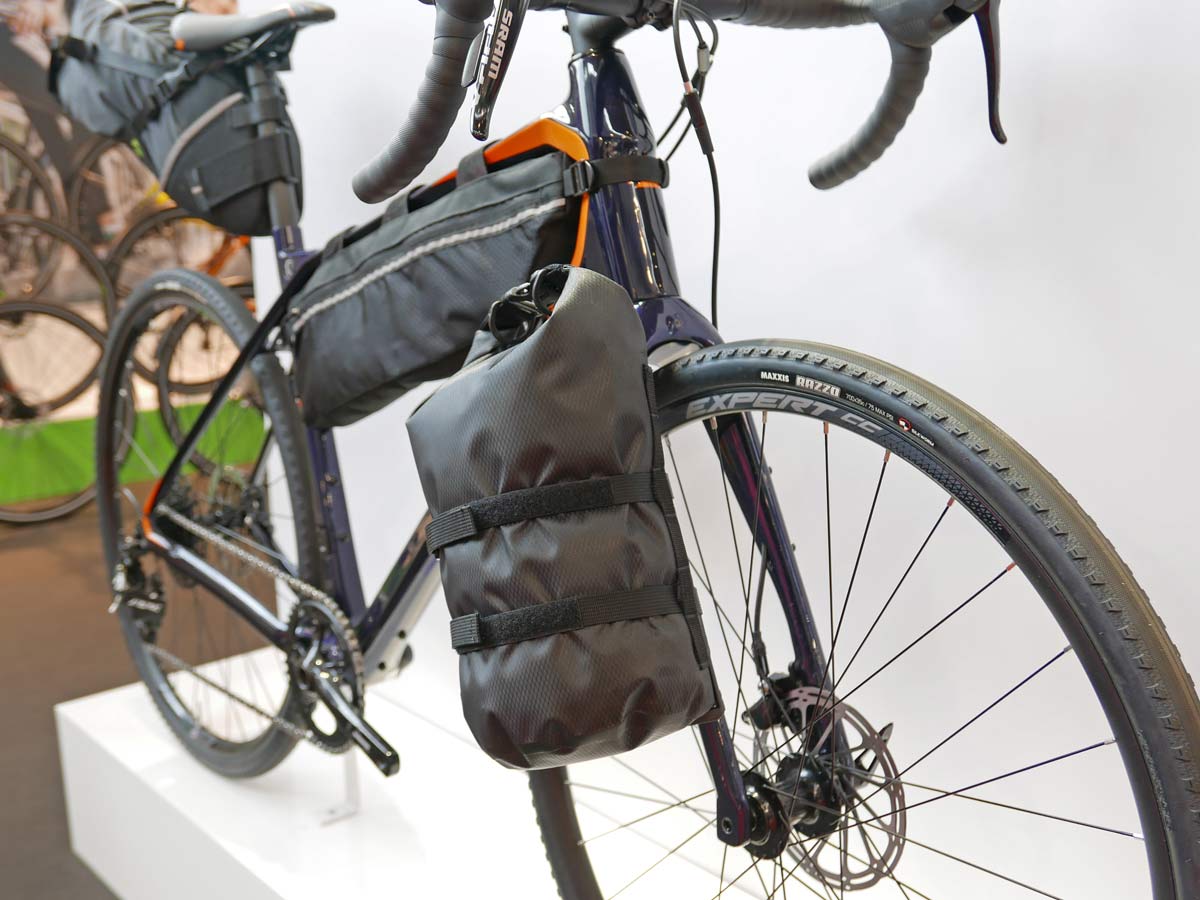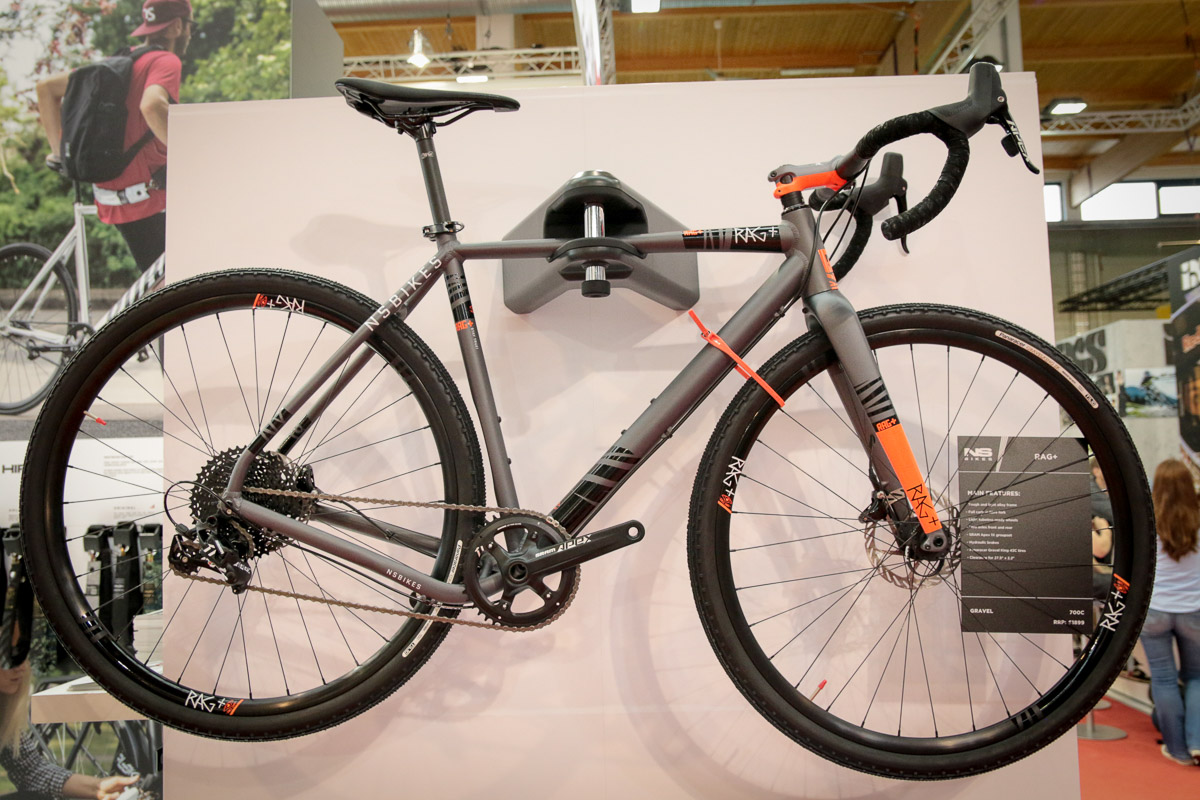Walking around the show, it’s easy to spot obvious trends. But we talked to product managers, brand ambassadors, and the marketing folks at hundreds of companies over the four days of Eurobike to get the real scoop on what’s coming for gravel bikes in 2018 and 2019…
DROPPED CHAINSTAYS
It’s nearly impossible to talk about dropped chainstays and not think about the Open U.P. and U.P.P.E.R. Their radical take on the gravel bike certainly brought the concept to the forefront for gravel bikes, but builders have been experimenting with wild chainstay designs for years – whether elevated, dropped, or otherwise.
The usual reason for a dropped driveside chainstay is to create additional tire clearance while keeping chainstay length to a minimum and still allowing for adequate chainring clearance. Tire clearance is somewhat of a fixed number in order to stay relevant (most people are wanting the option to fit 50mm tires these days), but chainring clearance is fluid. The more gravel bike designers can get the chainstay out of the way, the larger a chainring you can run.
Some brands, like Ibis, are putting their own spin on the idea by manipulating the stays to provide huge clearance while sticking to a threaded BB.
Unless we go back to the days of elevated chainstays for gravel bikes (we’re already there for some 29+ MTBs), don’t expect the dropped chainstay to go anywhere soon.
MULTIPLE WHEEL SIZES
Look for more options with 650B and 700c as wheel sizes. We’re not at the point of “Plus” mountain bikes where most are being designed to fit 29er XC tires and 27.5+ tires simultaneously, but there are bikes that accommodate both road standards. Mostly, for now anyway, you’ll see a mix of bikes that choose one or the other and optimize their geometry around it.
SUSPENSION
Lauf has been one of the early proponents of suspension forks for gravel riding. That’s hardly a surprise since they are a lightweight suspension fork maker. But this year they jumped into the gravel market with both wheels on their own True Grit gravel frame to pair with their fork. Curiously they didn’t opt for suspension or even more compliance out back, instead looking to build a stiff gravel race-ready carbon frame to pair with their improved and more progressive Grit SL fork. Fox answered with their modified 32 StepCast fork to create the short travel AX and test the market.
At Taipei show, we saw a full suspension concept bike from A Pro and X-Fusion…
…and Niner has shown us their working prototype of something they’re likely launching in 2018.
DROPPER POST INTEGRATION
As gravel bikes get more capable, the idea of including a dropper post makes more and more sense. The height adjust seat posts can help lower your center of gravity on tricky descents for improved handing, potentially better aerodynamics, and make maneuvers like bunny hopping logs easier by getting the seat out of the way. Don’t expect all, or even most of gravel bikes to come stock with droppers, but the ability to run one is relatively easy to add to a frame and could be a feature that some riders are looking for.
ALT DRIVETRAINS
Gates belt drives and internally geared hubs have been mainstays on proper touring bikes for a decade. Now that gravel has become the new adventure touring discipline, it makes sense that gravel bikes would adopt the alt drivetrain too. This carbon Favorit adopts the Gates and an Alfine hub, but we are even staring to see gearboxes like the Pinion get traction for the mixed-surface gravel road crowd as well.
FENDER MOUNTS COMMON, RACK MOUNTS GROWING
Most brands have embraced the concept that these all-road, any-surface gravel bikes are all about versatility. While some companies (and many racers) scoffed at the idea of putting rack & fender mounts on the multi-purpose cyclocross bikes that predated the gravel discipline, we’ve seen little resistance on proper gravel bikes. So why not add a few braze-ones at the rear end, and maybe something up front on the fork on a bike like this aluminum framed/carbon fork Bergamont Grandurance.
So now most of the gravel bikes coming can sport full coverage fenders for winter commuting or just wet weather touring. And a few rack mounts can make it easy to haul tons of gear across any road surface on your next adventure ride.
BIKEPACKING BUILDS
Why stop at rack and fender mounts? Some models get braze-ons to mount full-on touring equipment (like this Merida Silex), but the bigger trend for most mixed-surface touring is actually to ditch the structured racks and go for the lighter weight of bike packing bags. More and more companies are making capable saddle, frame & handlebar packs that simply strap to the frames. And companies like Merida, Ghost, Salsa & many others are working with bag makers to offer packs custom fit to turn their own gravel bikes into adventure touring bikes.
AFFORDABLE ALUMINUM BIKES
Gravel riding doesn’t only need to be within reach of those buying expensive carbon bikes. With most dedicated gravel bikes running 40mm 700c tires or 47mm 650b tires, there is plenty of cush & comfort in dropping out a few PSI from your tires (especially once you set up the bike tubeless after it came stock from your bike shop with tubeless-ready rims, tubeless-ready tires, and tubes installed!) So alloy bikes like this Bionicon Mashup, the Bergamont Grandurance up there with fenders, or the aluminum version of that Merida Silex above are making gravel riding more attainable under around 1500€ complete.
AND KEEP YOUR EYES OUT FOR…
Bikes without front derailleurs, or even the ability to mount them, means 1x-specific designs are going to be a thing. Many bikes are already spec’d that way, but we noticed a subtle trend toward seat tubes that have no concession for a front mech.
Oh, and did we mention e-gravel bikes like the Focus Project Y or Orbea Gain?
